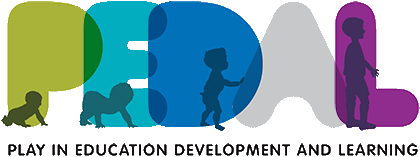Some children with disabilities go to special preschools where adults help them play. The adults who work in preschools sometimes ask occupational therapists for advice to help children play more. Occupational therapists need to know how children play when not helped by adults. This study videoed children playing both with lots of toys and without toys to see how they chose to play. Within the Republic of Ireland, young children with learning disabilities may attend special preschools where they do not share any part of their day with typically developing children. Within these settings, preschool staff support children’s play. Clinicians such as occupational therapists may be called upon to assist in progressing their play. To provide appropriate recommendations, occupational therapists must have a clear understanding of what play a child with learning disabilities engages in when not supported by adults. Occupational therapy literature described play as the most common occupation of children with a focus on process‐driven activity. This may be at odds with a model of early intervention, where play is often product‐driven, with the end goal in mind. The aim of this research was to establish what free play, if any, children with learning disabilities engage in when not supported by adults in an Irish preschool setting. Secondly, this study sought to describe what behaviours these children engage in when they were not playing. Finally, this study sought to establish inter‐rater reliability of the Revised Know Preschool Play Scale with this small sample. Systematic observation was used to explore the play and nonplay behaviours of the children involved. A convenience sample was used to identify five children to participate in the study. Results indicated that children engaged in free play within the sensory motor stage of development, as assessed using the Revised Knox Preschool Play Scale. They also spent significant time in nonplay behaviours. The behaviour patterns of the children and time spent in different activities were explored. (PsycINFO Database Record (c) 2013 APA, all rights reserved). (journal abstract)
